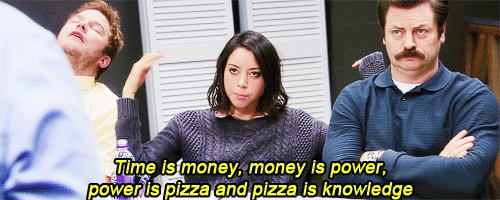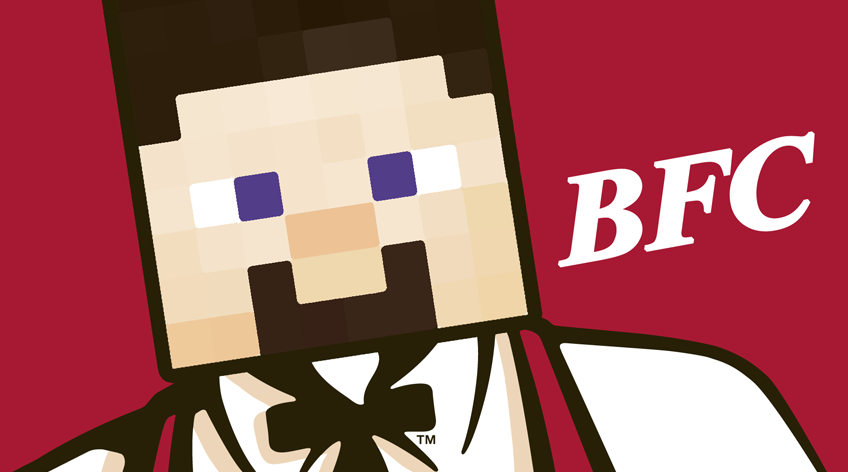Time Is Upon Us
For some final thoughts on BFC and the construction project, I’d like to devote some time to some ideas of communication, communities, and, of course, the Minecraft commons. The time for us to shed our pixellated avatars and congregate as a group in the physical world is upon us (ETA: In a few hours, actually! But be assured, I totally started this post days earlier!), and naturally, I’ve found myself wondering how communication will change when we make that shift. Sai_Afzal, Arkel_Angel, irishboy23, etc. will transcend the virtual realm, being replaced by Saeed, Marie, Sean, etc, and with us, so too will our methods of communication. How will we account for real time dialogue, with little time to process our answers? How will we express the cheekiness of a “:P” in real life? Will Gersande’s gleeful “MWAHAHAHA”s translate to genuine maniacal laughter, to ring through the halls of the Library Building? (I personally hope so).
Marie-Christine’s touched upon the nature of our little online community and the social investment we’ve accrued as a result of several factors. With construction complete, I think it’s safe to say that it went mostly without incident; there were no major setbacks, no rules (extrinsic or otherwise) broken, and a neatly-maintained air of respect between all the researchers. We communicated in various ways, including:
- Skype: The first time our group got together, we held a conversation over Skype while playing, with Nic & Gersande showing us the ropes.
- E-mail: Is it just me, or has e-mail suddenly become trendy again?
- Workflowy: Although we were less diligent with this towards the end, it was a handy organizational tool/public journal at the beginning.
- Facebook Chat: Marie and I would organize times to play together through this (or, at times, lament our inability to play when obstructed by server issues)
- Minecraft Chat: Of course, how we would communicate within the game.
- In-Game Signs/Books/Bulletin Board: Handy for leaving messages for the other players.
- Good Old-Fashioned Talking! But this was kept to a minimum.
I list all of these things with a particular idea in mind, one that comes from James Carey’s Communications as Culture:
“The transmission view of communication is the commonest in our culture–perhaps in all industrial cultures–and dominates contemporary dictionary entries under the term. It is defined by terms such as “impaffing,” “sending,” “transmitting,” or “giving information to others.” It is formed from a metaphor of geography or transportation.”
Carey goes on to explain that, at one point in time, the transportation of goods and the transportation of information were one and the same. This makes sense, as, when the spoken word was the only way of communicating, there was a natural requirement for both parties (the communicator and the… communicatee?) to be physically within earshot of one another. Even with written messages, there was a time – if we, in front of our computer screens, typing up and sending instantaneous messages, would dare to remember – where someone would have to physically carry the message from point A to point B. Now we have a plethora of nigh-instantaneous ways to communicate, and there’s no doubt that this sped along construction.
We began the project relying heavily on our more experienced peers, but we learned quickly – both individually, and as a group. That nature of that first play session – an intersection of two of the aforementioned communicative methods, Skype and Minecraft’s built-in chat engine – was unique, never to be repeated. There was never a point, if I’m remember correctly, where all of us were on at the same time again, and Skype calls gave way to other forms of communication. Still, communication was maintained – information was efficiently transported between members – and construction continued smoothly.
This harkens back to one of the questions I had when I began my research – how does pre-existing experience, knowledge, etc. affect interactions in a group, and by extension, the commons? The answer may seem obvious, but I’d like to unpack it a bit.
Our first play session involved a lot of hand-holding and guidance, but we quickly learned to maneuver around the server and its custom content (or at least that which was relevant to us) independently. That first imparting, or transmission, of knowledge and experience was crucial, though – had we been not been offered that guiding hand from our seniors, we’d have lost a lot of time spent figuring things out – or at least spent plinking away at canopy trees that we instead got to watch explode like something out of a summer blockbuster.

There’s a parallel to be drawn there between the idea of knowledge as a resource and food as a resource. As I mentioned in my last post, BFC will, in theory, be providing chicken for other players on other servers, particularly the next crop of students that take up the mantle and start building on the ENGL 398 server. I highlighted how the immediate availability of this resource would be a time-saver, offering more time to spend building and innovating. This is not unlike how the experience imparted to us by our colleagues served to save the building team quite a bit of time.
So, ultimately, maybe we’re all just trying to save time (the most valuable resource?) and get things done with as much efficiency, speed, and productivity possible. “It is a view of communication that derives from one of the most ancient of human dreams: the desire to increase the speed and effect of messages as they travel in space” writes Carey. Maybe this project, in the end, exemplified that most ancient of dreams.
Finally, a bemused friend pointed out to me that I have a tendency to end my weekposts with questions of an open-ended nature. Why do I do this? Is it a stylistic choice? Is it an invitation to the reader to join me in my thinking? Is it because, as a researcher and an academic, I must remain vigilant in my constant questioning, and hesitant to embrace absolute truths? Will the world ever know for sure?
Referenced:
Carey, James. “CHAPTER 1 A Cultural Approach to Communication”, Communication as Culture. http://www3.niu.edu/acad/gunkel/coms465/carey.html

